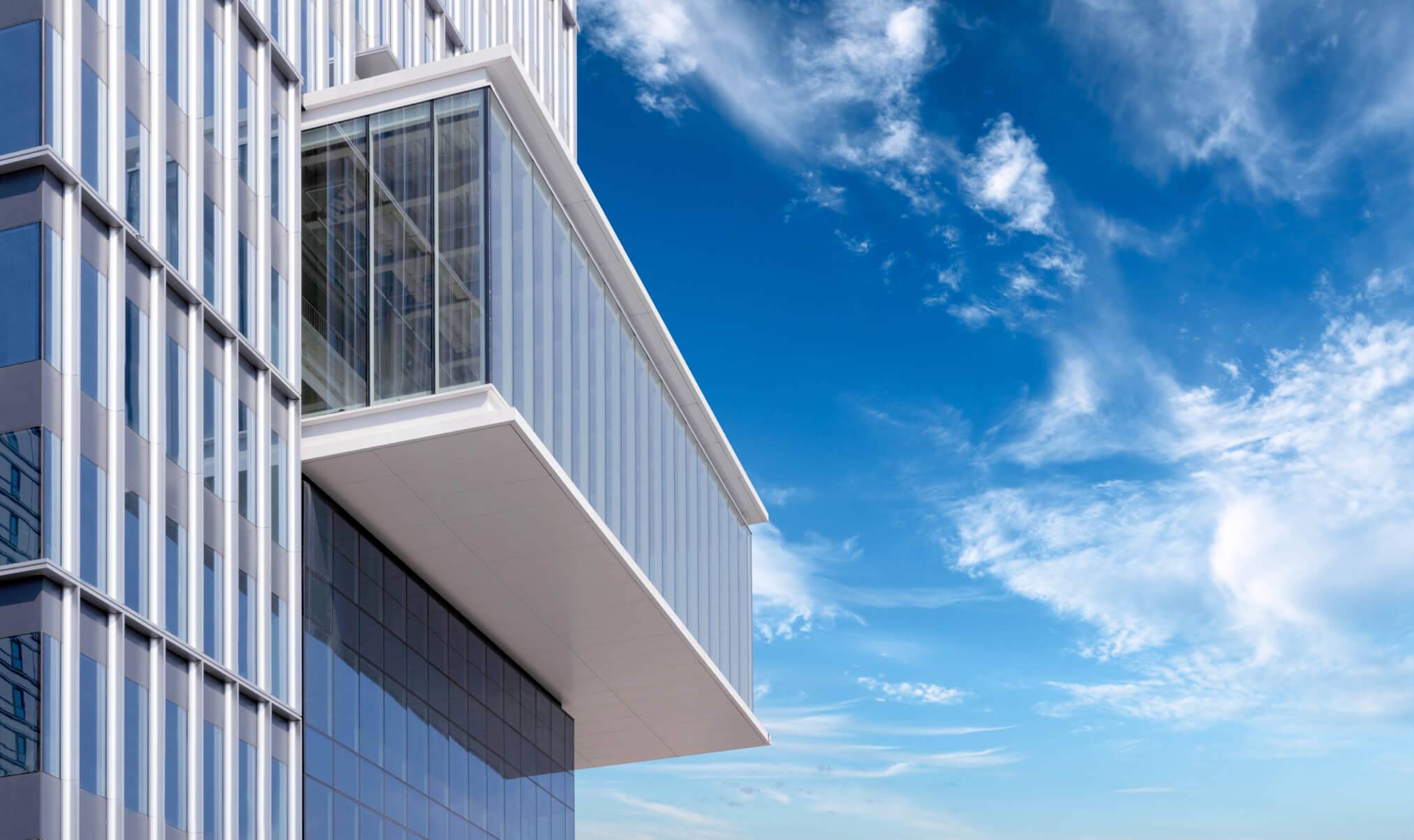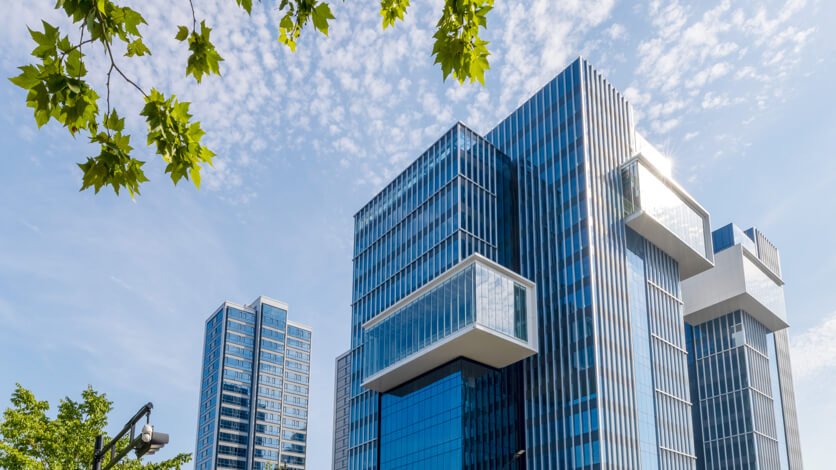We’ve integrated traditional architectural features,
Into the details of a modern external façade.
Both aspects, intricately woven together, integrated seamlessly.
We’ve integrated traditional
architectural features,
Into the details of
a modern external façade.
Both aspects, intricately woven
together, integrated seamlessly.


Lead Designer of Hangzhou Winland Center
Director at

Stefan Krummeck
Farrells is an architectural design firm of international repute. Founded by world-renowned architect and urban planner Sir Terry Farrell (EN) in 1965, the firm has its corporate headquarters and main offices in London, Hong Kong and Shanghai.
Lead designer Stefan Krummeck (DE) is director and senior partner at Farrells. He is an architect and urban designer of international standing, and has extensive experience designing countless iconic and award-winning buildings, master plans and infrastructure projects.

Inspiration
Each time I visit Hangzhou,
This city mesmerizes me.
I’m fascinated by its tea, its temples and landscapes, its history and culture.
Hangzhou’s socio-cultural heritage,
Gave us the inspiration and room for imagination we needed for our designs.
Hangzhou Winland Center is situated at the starting point of the Grand Canal.
It’s located right beside Xiangjisi Temple, which boasts a long history of over one thousand years.
As far as the master plan and architectural design forms go,
The structure, to a considerable degree,
Echoes the majestic Xiangjisi Temple.
More importantly, it pays homage to this ancient city.
Winland wished to pay their respects and show deference to the city’s historical legacy,by spending three precious years merely on the design process by leaving a 30-meter of recess between the main architecture (building) and the red line (plot boundary)and thus suffering a loss on the plot ratio.they’ve managed to allow much clearer skyline for the Xiangjisi Temple.

Winland wished to pay their respects and show deference to the city’s historical legacy,by spending three precious years merely on the design process by leaving a 30-meter of recess between the main architecture (building) and the red line (plot boundary)and thus suffering a loss on the plot ratio.they’ve managed to allow much clearer skyline for the Xiangjisi Temple.

I see Winland Center as a modernist building complex.
Its façade design, while needing to convey a coherent architectural style,
Should also display varying dimensions and a richness of layers,
Not unlike a concerto.


We segmented the building’s façade into asymmetrical,
geometrical sections of different sizes, Then used straight lines
and square shapes to outline the building’s contours.
We sought inspiration in the Dutch De Stijl art movement,
For the façade design of Winland’s office tower.
We borrowed from the artistic style of Mondrian, With lines that intersect and extend outward from this immense architectural structure.
This helped break up the building’s stiff contours and rigid forms, and making it more accessible in terms of scale.
This, to a certain extent, has helped to prevent the surrounding area from being overshadowed by a gargantuan architecture, and alleviate its visual pressure on the passers-by.
Especially given the close proximity of the 1000-year old Xiangjisi Temple on the west side of the office tower.

Form
Whilst underscoring the possible typologies of an office tower façade,
I also referenced the timeless elegant forms found in more traditional buildings.
By combining simple lines with a building façade,
We were able to evoke Mondrian’s ‘color blocks’,
And skillfully combine four basic façade types,
Thus deciding on a uniform façade language for the entire building complex.


The building’s four variations on façade language,
Consist of cutting aluminium sheets into different forms,
And assembling them according to alternating depth and lines of varying thickness.
With a perfect combination of profiles and glass,
We managed to achieve various curtain wall effects,
On the office tower’s façades and angles.

All these careful considerations combined,
Helped produce architectural forms that look more elongated and sculptural,
And reinforce a sense of visual transparency.
This has had an uplifting effect on the building and made it more graceful,
Effectively turning it into a Neoplasticist artform.

Color

Our ambition,
Was to use a modern palette of light tones that felt lithe and vibrant yet serene and with a technologically advanced feel to them,
To offset the more traditional, dignified quaintness of Xiangji Temple.
So that the office tower and its surroundings would blend together in terms of architectural appearance,
As well as offset one another.
We wanted the building’s glass to be in the blue-gray part of the color spectrum,
So that the profiles and glass would complement each other,
And to bring out the contrast between the two, without making the color contrast too intense.
Ultimately, this led us to decide,
To add silver features to the façade’s vertical metal decorative beams.
This makes the vertical metal decorative beams gleam in the sunlight,

With the glass as a backdrop,
Giving the whole building a light blueish tint,
As it reflects the azure sky and the white clouds.
This creates an artistic texture,
Which contrasts, corresponds and resonates with the ‘gallery street’ down below.

Cantilevered Boxes

While scale-designing the building’s segmented sections, each facing a different direction,
We opted for cantilevered boxes, which were embedded into the building in all four directions.
This helped broaden the building’s visibility in all directions.

These cantilevered boxes is a complementary element to the whole project.
The design language is extended onto the project’s ‘gallery street’.
We opted for a modern tone of white color,
To match 8.5-meter full-height ultra-clear glass panels.
The cantilevered boxes embedded in the main structure appear to be suspended in mid-air, as if the clouds floated in the blue tinted glass.

The Concerto

In the end, we achieved a delightful balance,
Like that of a concerto.
In the early stages of the design process,
The developer as set their vision for the project – to be complementary to the temple.
They wanted it to be a group of sculptural ubran architectures that pays homage to the city of Hangzhou.

Our design has eventually helped realize such vision: a delightful interaction between a modern project and the ancient temple.
We’ve achieved a delightful balance,
Like that of a concerto.

more





